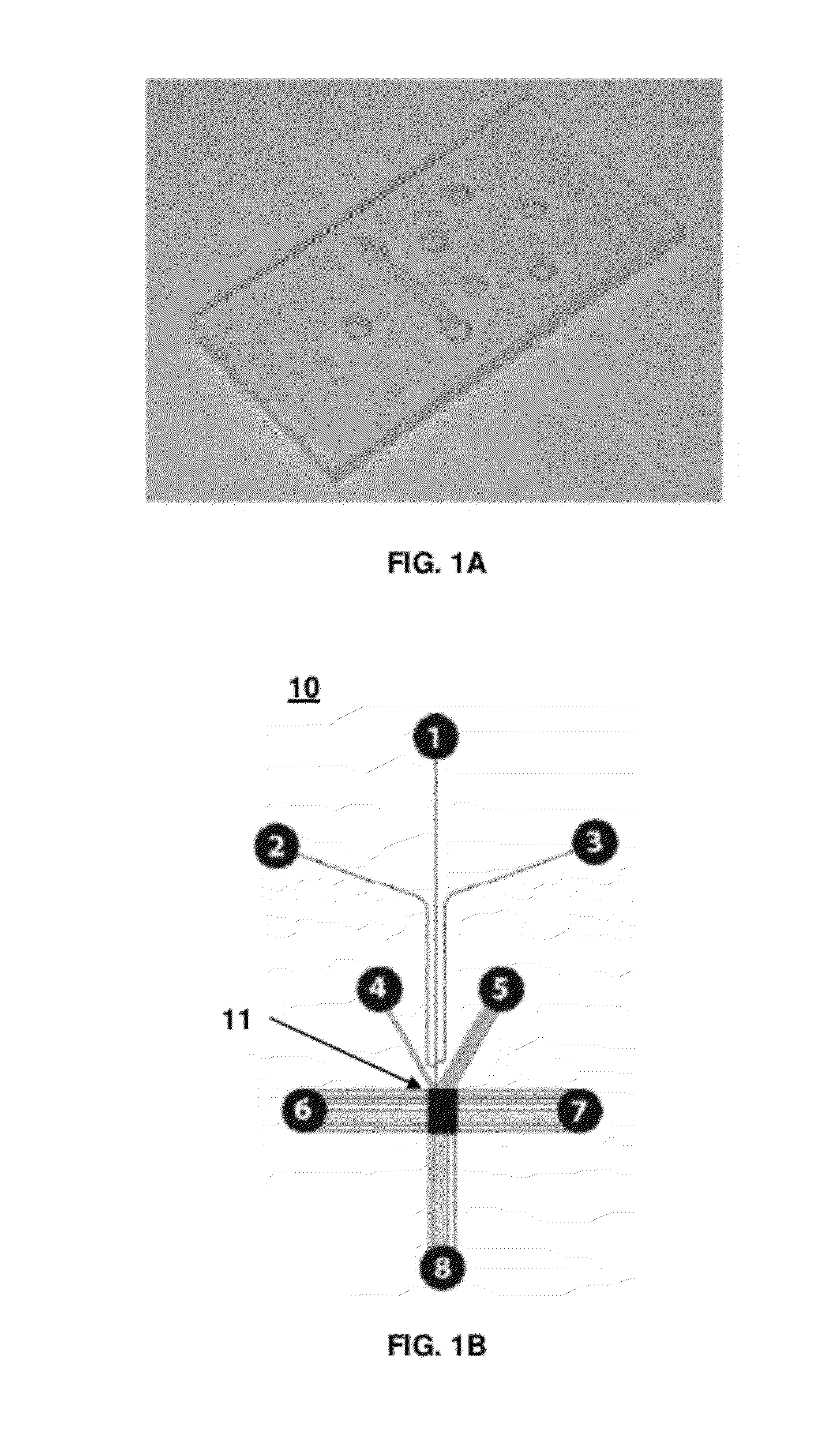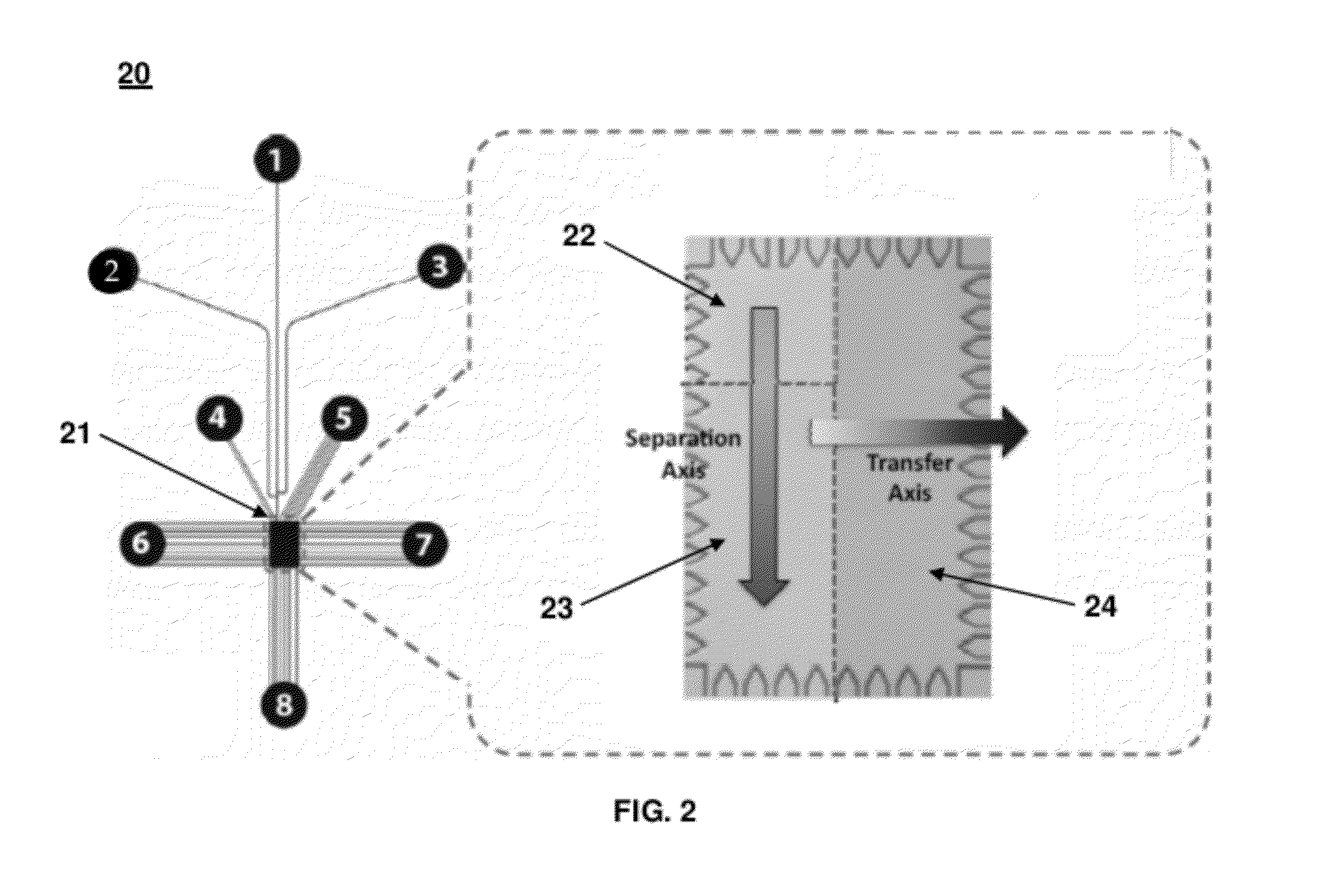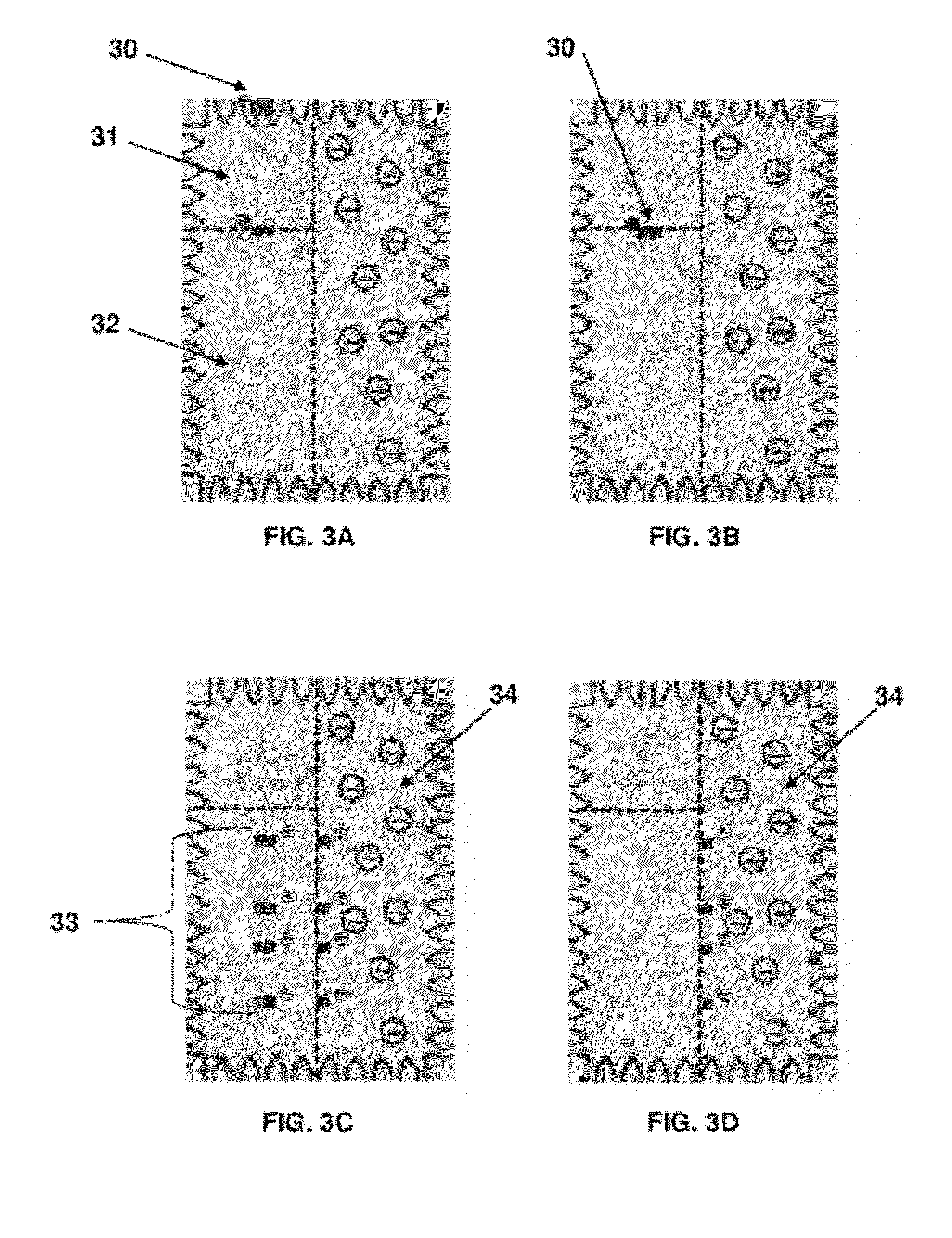Multi-directional microfluidic devices comprising a pan-capture binding region and methods of using the same
a multi-directional microfluidic and binding region technology, applied in the field of multi-directional microfluidic devices comprising a pan-capture binding region, can solve the problems of inability to meet the performance needs of high-throughput sample analysis, impractical for clinical use, and conventional blotting techniques, as discussed above, to achieve the effect of facilitating electrostatic binding of analytes
- Summary
- Abstract
- Description
- Claims
- Application Information
AI Technical Summary
Benefits of technology
Problems solved by technology
Method used
Image
Examples
example 1
Design of Microfluidic Device
[0110]A glass microfluidic chip (10 mm×15 mm) (FIG. 1A) was designed using Autocad software (Autodesk, San Rafael; Calif.). A rectangular microfluidic chamber (1 mm×1.5 mm×0.02 mm) was designed to accommodate three functional gel regions for different Western blotting steps. FIG. 2 shows a schematic of the microfluidic chamber that included the loading gel for sample loading, the separation gel for protein sizing, and the blotting gel for transfer and target probing. The chamber was connected with several microfluidic channels, such as the injection channels and control channels. The width of each injection channel was 25 μm, and the width of each control channel was 10 μm. The injection channel was branched into three channels (see channels 1, 2, and 3 in FIG. 2) that formed a double-T junction, where a narrow sample plug was formed by applying a pinch current. Control channels (see channels 4, 5, 6, 7, and 8 in FIG. 2) were also linked to the chamber. ...
example 2
[0122]Experiments were performed using the same experimental protocol as Example 1 to determine the transfer efficiency and reproducibility of the assay. The binding member (e.g., capture protein) used in the fabrication of the binding medium of the microfluidic device was 150 kDa IgG (anti-C-reactive protein). A sample containing protein G (20 kDa), OVA (45 kDa), BSA (68 kDa), and α-actinin (95 kDa) was separated in the separation medium and transferred to the binding medium. The separation step was completed in 21 sec after loading the sample (FIG. 10A). FIG. 10B shows a fluorescence image during the transfer of the separated sample 35 s after sample loading. Transfer of the separated sample from the separation medium 1010 to the binding medium 1020 was completed in 42 sec (e.g., 63 sec after sample loading) (FIG. 10C). Proteins were retained by the binding medium 1020 even after washing the bound proteins with buffer, as shown in the fluorescence image in FIG. 10D, taken 139 s af...
example 3
[0123]Experiments were performed using the same experimental protocol as Example 1 to determine the transfer efficiency and reproducibility of the assay. The binding member (e.g., capture protein) used in the fabrication of the binding medium of the microfluidic device was 465 kDa β-galactosidase (pl=4.61). A sample containing protein G (20 kDa), OVA (45 kDa), BSA (68 kDa), and α-actinin (95 kDa) was separated in the separation medium and transferred to the binding medium. The separation step was completed in 18 sec after loading the sample (FIG. 11A). FIG. 11B shows a fluorescence image during the transfer of the separated sample 21 s after sample loading. Transfer of the separated sample from the separation medium 1110 to the binding medium 1120 was completed in 20 sec (e.g., 38 sec after sample loading) (FIG. 11C). Proteins were retained by the binding medium 1120 even after washing the bound proteins with buffer, as shown in the fluorescence image in FIG. 11D, taken 53 s after s...
PUM
| Property | Measurement | Unit |
|---|---|---|
| molecular mass | aaaaa | aaaaa |
| molecular mass | aaaaa | aaaaa |
| molecular mass | aaaaa | aaaaa |
Abstract
Description
Claims
Application Information
 Login to View More
Login to View More - R&D
- Intellectual Property
- Life Sciences
- Materials
- Tech Scout
- Unparalleled Data Quality
- Higher Quality Content
- 60% Fewer Hallucinations
Browse by: Latest US Patents, China's latest patents, Technical Efficacy Thesaurus, Application Domain, Technology Topic, Popular Technical Reports.
© 2025 PatSnap. All rights reserved.Legal|Privacy policy|Modern Slavery Act Transparency Statement|Sitemap|About US| Contact US: help@patsnap.com



